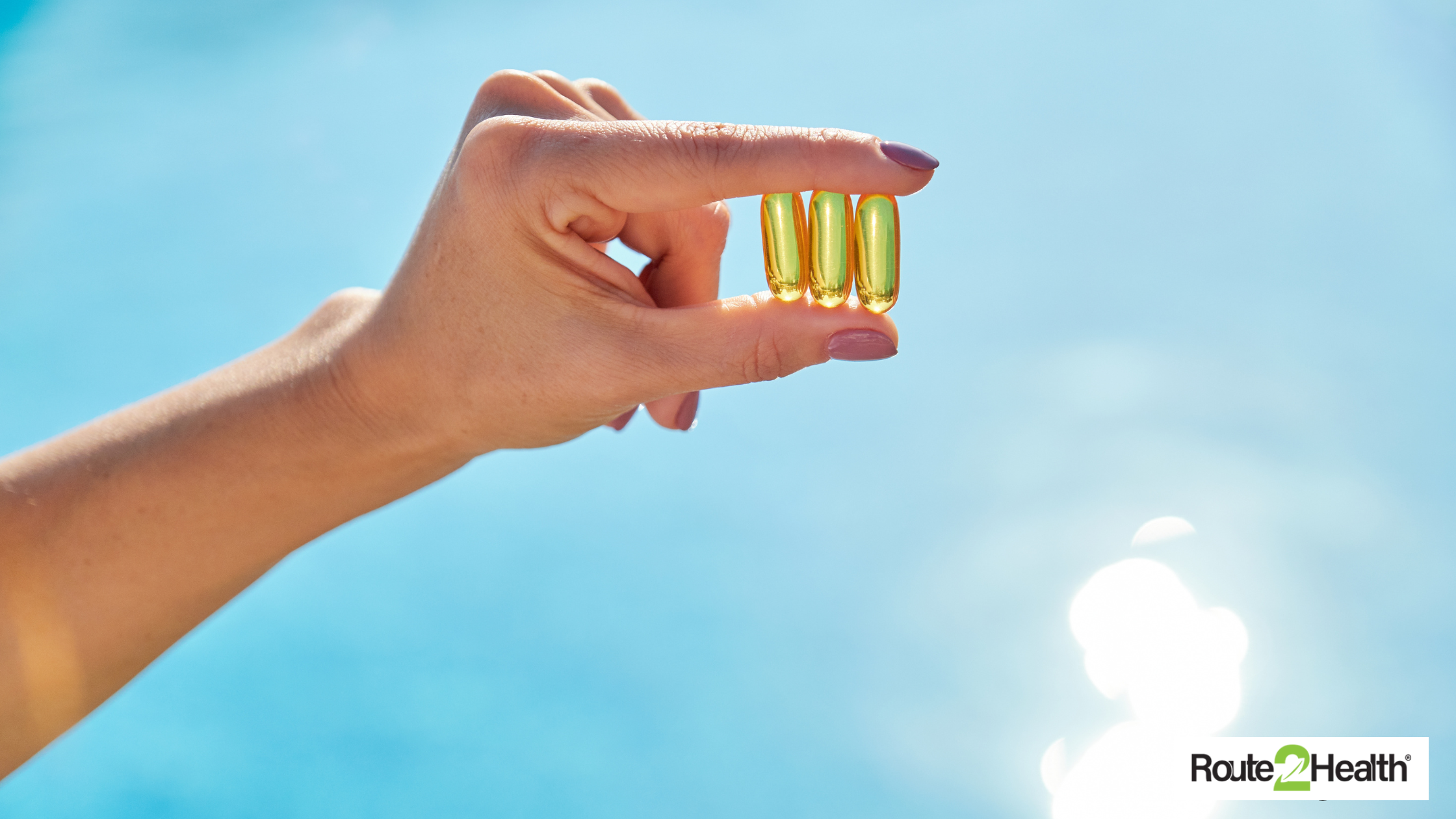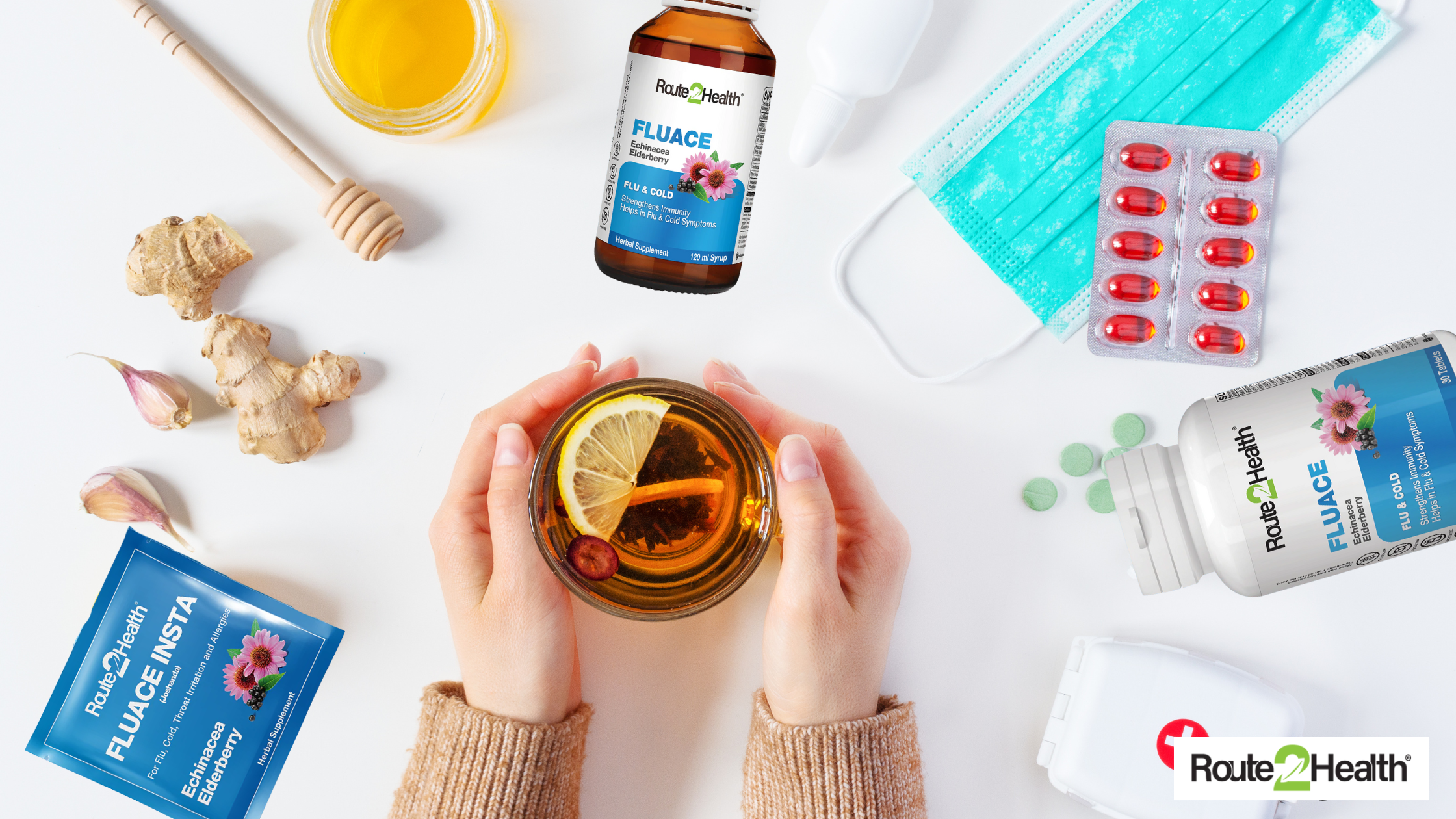
Vitamin D3 & Immunity in Changing Seasons: How It Helps You Fight Flu and Other Infections?
As temperatures dip and days get shorter, sniffles, sore throats, and the seasonal flu tend to surge— in Pakistan, when influenza peaks nationally. Keeping immunity resilient matters more than ever in this window. One under-appreciated ally is vitamin D3 (cholecalciferol): beyond bone health, it plays powerful roles across innate and adaptive immunity, mucosal defence, and inflammatory balance.
Public-health guidance in the UK even recommends everyone consider a daily vitamin D supplement during autumn and winter because sunlight is inadequate for natural synthesis—advice that’s particularly relevant when shorter days limit time outdoors.
Large meta-analyses and mechanistic studies show vitamin D deficiency is common and linked to a higher risk of acute respiratory infections (ARIs). While recent updates suggest the overall preventive effect of supplementation on ARIs is modest when averaged across diverse trials, people who are deficient and those using regular (not bolus) dosing appear most likely to benefit. In Pakistan, deficiency is widespread across all ages and genders—over half of surveyed adults were deficient in one large sample—making an autumn-winter vitamin D strategy a pragmatic option for many households.
Why Vitamin D3 Matters More When Seasons Change?
Seasonal shifts change how much vitamin D your skin can make from sunlight. When the sun’s UVB rays fall at a lower angle in cooler months, cutaneous synthesis plunges. That’s why multiple public-health bodies advise daily supplements through autumn and winter to maintain baseline sufficiency. In Pakistan, the risk compounds: even with abundant sunshine in parts of the year, cultural clothing, time spent indoors, air pollution, and darker skin pigmentation (which reduces UVB penetration) all lower endogenous production. Meanwhile, influenza circulation intensifies as temperatures drop; national advisories note rises in influenza-like illness with winter. Putting these pieces together, a season-aware vitamin D plan can support immune readiness precisely when respiratory viruses surge.
Systematic evaluations in Pakistan report high deficiency and insufficiency rates, while international reviews link low 25-hydroxyvitamin D [25(OH)D] levels with increased susceptibility to infections and dysregulated immune responses.
How Vitamin D3 Helps Your Immune System?
Think of immunity like a well-run security team: a strong front door, alert guards, and a calm boss who stops panic. Vitamin D3 supports each part.
1. Stronger First Line of Defence (Your “Front-Door Guards”)
Your nose, throat, and lungs are coated with tissues that act like a protective wall. Vitamin D helps:
- Make natural germ-fighting peptides (like LL-37). These are tiny proteins your body uses to poke holes in viruses and bacteria—like hand sanitiser your body makes itself.
- Keep cell “tight junctions” snug. Vitamin D helps cells in your airway lining stay tightly sealed so germs find it harder to slip through.
- Support clean-up (autophagy). This is your cells’ recycling system that clears out infected or damaged parts faster.
Why this matters in winter? When more viruses are around, better “door security” means fewer germs get inside, and those that do are dealt with sooner.
2. A smarter, more balanced response (your “calm boss”)
Your immune system has to attack germs without overreacting. Vitamin D helps set the “thermostat”:
- It reduces over-the-top inflammatory signals (the kind that make you feel lousy and can irritate the lungs).
- It encourages regulatory cells that tell the immune system when to attack and when to stand down.
- It supports antibody quality, helping your body make targeted, useful antibodies after infection or vaccination.
Why this matters? Many winter symptoms come from inflammation. Vitamin D helps your body fight smartly—not wildly.
3. Healthier mucosal barriers (your “protective lining”)
Vitamin D supports the moist, protective lining of your nose, mouth, and lungs:
- Helps those surfaces make germ-fighting peptides.
- Supports ciliary movement (the tiny hairs that sweep germs and mucus out).
- Keeps the lining well-maintained, so it can trap and remove invaders.
Why this matters? A sturdy, well-oiled lining reduces the chances that a winter bug will take hold.
4. Calmer inflammation and faster recovery (your “brakes”)
Too much inflammation can make a simple cold feel much worse. Vitamin D helps your immune system use the brakes when needed, so you clear the virus but recover with less collateral damage. This can mean milder symptoms and a shorter rough patch.
What studies suggest?
- People who start out deficient in vitamin D are the ones most likely to see fewer respiratory infections after taking regular vitamin D.
- Daily or weekly doses work better than occasional big doses for immune benefits.
- Across everyone, the average effect is modest, so don’t expect vitamin D to stop every cold or flu. It’s a foundation, not a cure.

How To Get Enough Vitamin D In Cooler Months?
- Take a steady daily dose. Many public-health groups suggest 10 micrograms (400 IU) daily in autumn and winter for most adults. Some people need more or less—ask your doctor or pharmacist if you’re pregnant, over 65–75, have a health condition, or take certain medicines.
- Eat some vitamin D foods. Oily fish (salmon, mackerel), fortified milk or plant milks, and eggs help, though food alone rarely keeps levels ideal in winter.
- Get safe sun when possible. Outside of peak winter, short midday exposure helps, but in winter don’t rely on sun alone—especially with darker skin or high pollution.
- Don’t megadose unless a clinician tells you to. Very large, rare doses aren’t better for immunity and can be risky for certain conditions.

A Simple Daily Habit
Vitamin D3 by Route2Health offers a convenient, consistent daily dose of 5000 IU to help maintain vitamin D sufficiency through autumn and winter—supporting your immune balance, barrier integrity, and overall well-being when seasonal infections circulate. For personalised dosing (e.g., during pregnancy, in older age, or with medical conditions), speak to your healthcare professional.
FAQs
1. Can vitamin D3 prevent the flu on its own?
No single nutrient prevents flu. Evidence shows vitamin D helps maintain balanced immune function and may reduce respiratory infection risk in deficient people, but overall population-wide effects are modest. Keep levels sufficient and get vaccinated, ventilate rooms, and practice hand hygiene.
2. What dose should most adults take in winter?
Public-health guidance commonly recommends 10 µg (400 IU) daily in autumn/winter for the general population. Certain groups may need different amounts—check with a clinician.
3. Is daily better than weekly or monthly mega-doses?
For respiratory outcomes, analyses suggest regular daily/weekly dosing outperforms infrequent bolus dosing. For deficiency treatment, clinicians may still use specific protocols; follow medical advice.
4. Who should avoid high-dose vitamin D without supervision?
People with conditions like sarcoidosis, hyperparathyroidism, chronic kidney disease, or on certain medications should avoid unsupervised high doses due to hypercalcaemia risk.
5. Why is vitamin D so low in Pakistan despite sunshine?
Air pollution, cultural clothing, indoor lifestyles, darker skin pigmentation, and limited midday sun can all reduce cutaneous synthesis. Studies show widespread deficiency across demographics.























































